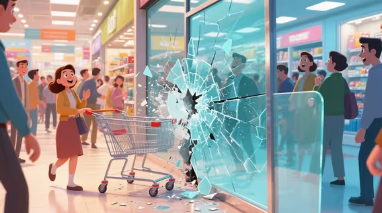High-Strength Clear Acrylic Sheet
One of Oleg's popular products is the clear acrylic sheet, and our strong production capacity ensure...



1: Cast Acrylic Sheets Redefine Impact Resistance in Transparent Materials
1.1: Shattering Glass Limits: How Acrylic Surpasses Traditional Breakability
Traditional glass, while aesthetically pleasing, suffers from inherent brittleness. Even minor impacts can lead to catastrophic shattering. Cast Acrylic Sheets, by contrast, exhibit impact strength up to 10 times greater than standard glass. Their enhanced molecular structure allows them to absorb and dissipate external forces efficiently, maintaining material integrity even under pressure. This makes them ideal for environments where safety and reliability are paramount.
1.2: Toughness in the Face of External Stressors
Whether used in architectural glazing, safety barriers, or commercial displays, Cast Acrylic Sheets deliver dependable toughness. Their resistance to cracking under force makes them less prone to failure, minimizing the dangers associated with sharp glass fragments. The unique toughness of the material eliminates many of the risks typically associated with transparent installations in high-traffic or high-risk areas.
1.3: A Long-Term Safety Solution for High-Traffic Applications
Thanks to their outstanding impact resistance, Cast Acrylic Sheets outperform glass in applications such as stadium shields, school windows, retail enclosures, and transportation hubs. These sheets maintain clarity while resisting damage, ensuring long-term visibility and performance without compromising user safety. This superior performance translates to longer lifespans and fewer replacements over time.

2: Enhancing Safety and Reducing Risk in Modern Infrastructure
2.1: Superior Safety for Public and Private Spaces
The safety edge of Cast Acrylic Sheets lies not only in their strength, but in their fracture behavior. Unlike glass, which can shatter into dangerous shards, acrylic resists cracking and does not produce sharp fragments when stressed. This makes it a top choice for child-friendly environments, public facilities, and safety-conscious architectural projects.
2.2: Mitigating Injury in Case of Impact
In environments prone to accidental collisions—such as hospitals, airports, schools, and retail centers—the consequences of material breakage can be severe. Cast Acrylic Sheets act as a preventive measure, absorbing impact without disintegration. This reduces injury risks not only for people but also for surrounding assets, preserving both physical well-being and property integrity.
2.3: Meeting Safety Standards Without Sacrificing Aesthetics
Despite their toughness, Cast Acrylic Sheets do not compromise on visual appeal. They remain crystal-clear and customizable, allowing architects and interior designers to meet rigorous safety standards without sacrificing elegance. This balance between form and function positions acrylic as the go-to material for modern, safety-first design strategies.

3: Long-Term Value: The Economic and Environmental Advantage of Cast Acrylic Sheets
3.1: Exceptional Durability Translates to Extended Lifespan
One of the most attractive features of Cast Acrylic Sheets is their resistance to wear and environmental stress. Unlike glass, which may degrade, craze, or discolor over time, cast acrylic maintains structural integrity and clarity even under long-term UV exposure, temperature shifts, and humidity. This resilience ensures that installations remain visually and structurally sound for years.
3.2: Low Maintenance, High ROI in Demanding Conditions
Thanks to their hard-wearing properties, Cast Acrylic Sheets require minimal maintenance. They resist scratching, yellowing, and surface fatigue better than most transparent alternatives. This leads to significantly lower upkeep costs over the product’s lifecycle. For building managers and industrial planners, this translates into predictable, budget-friendly performance over time.
3.3: Sustainable Investment Through Fewer Replacements
Because Cast Acrylic Sheets rarely need replacement due to breakage or weathering, their use results in fewer materials consumed over time. This not only offers direct cost savings but also supports environmental sustainability goals. In applications ranging from signage to construction facades, choosing acrylic means reducing waste, transportation costs, and long-term resource consumption.